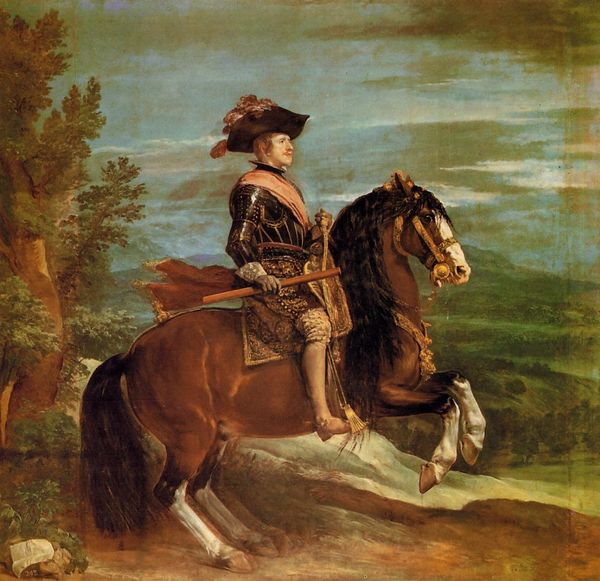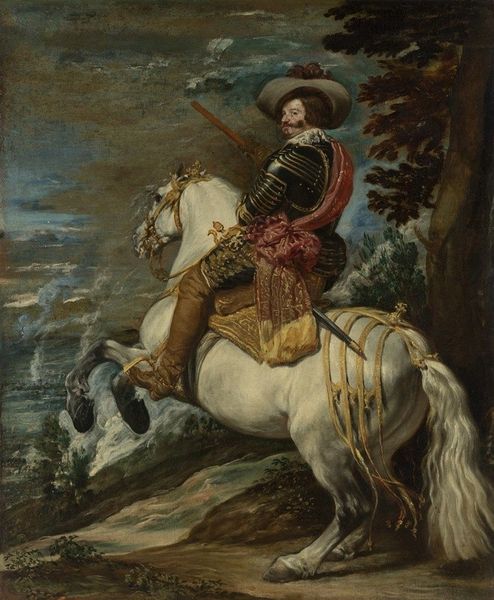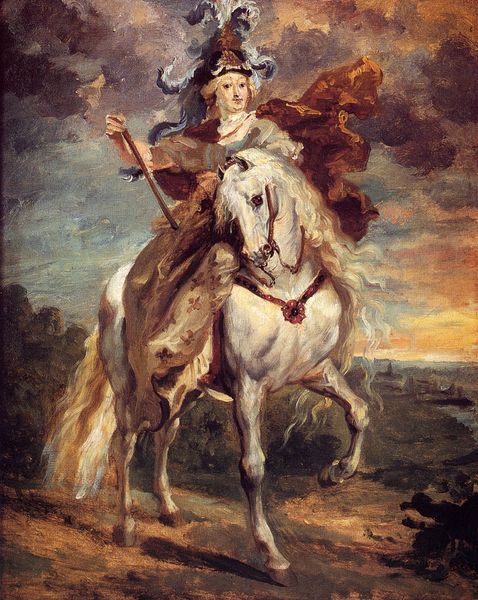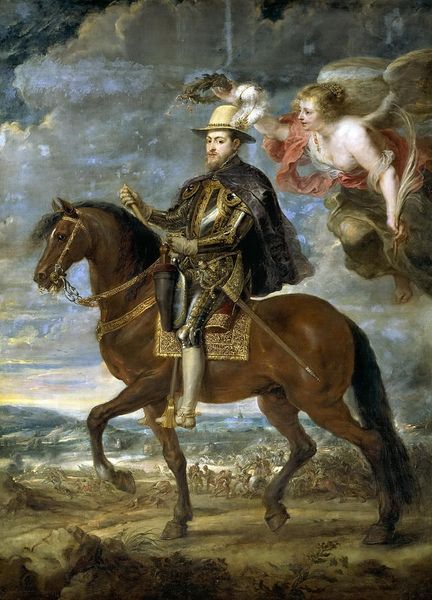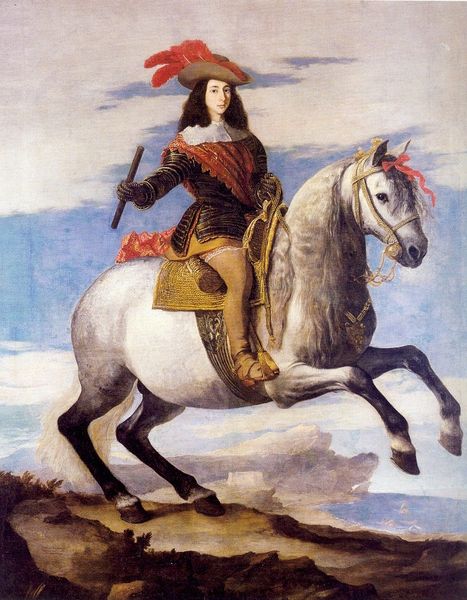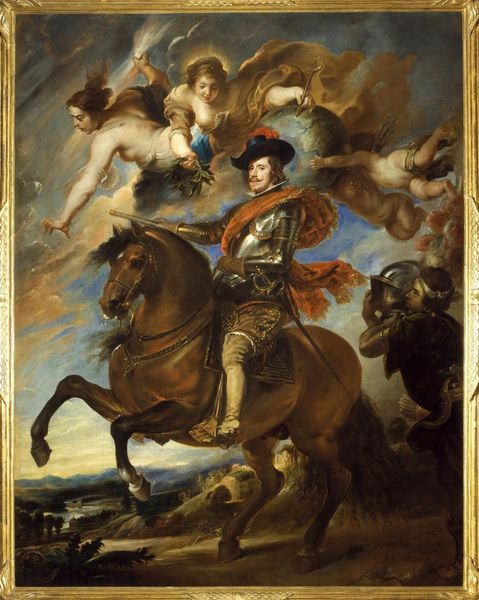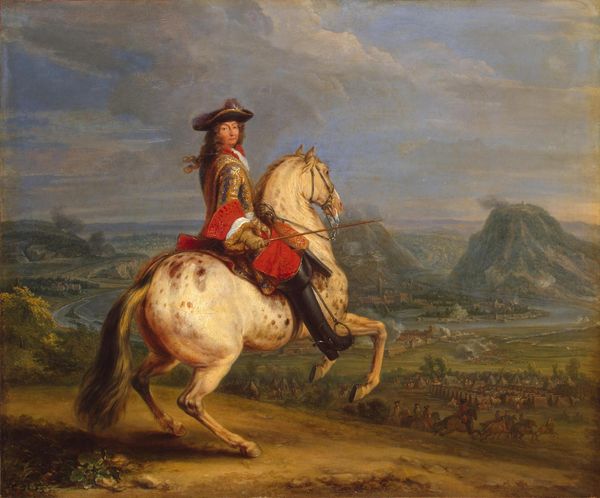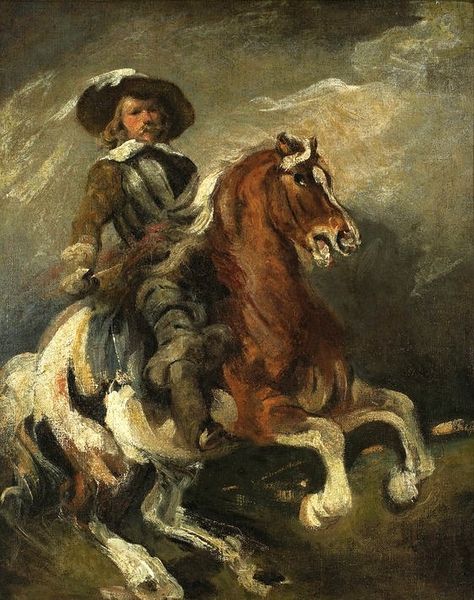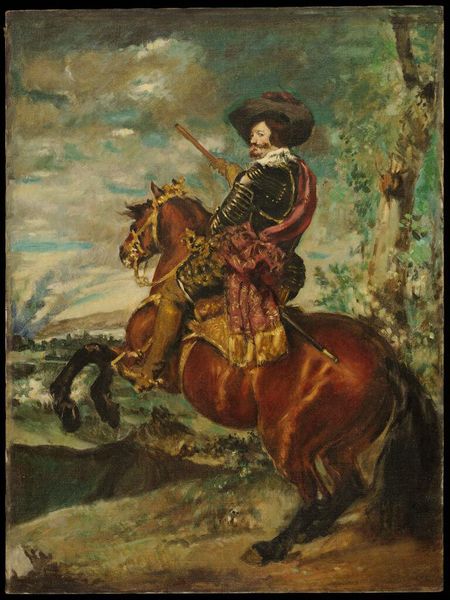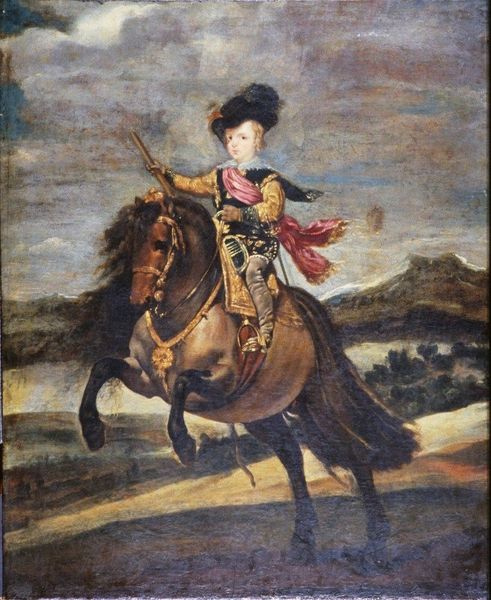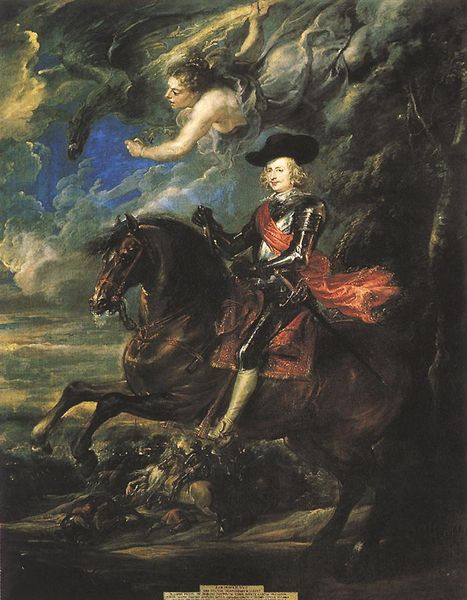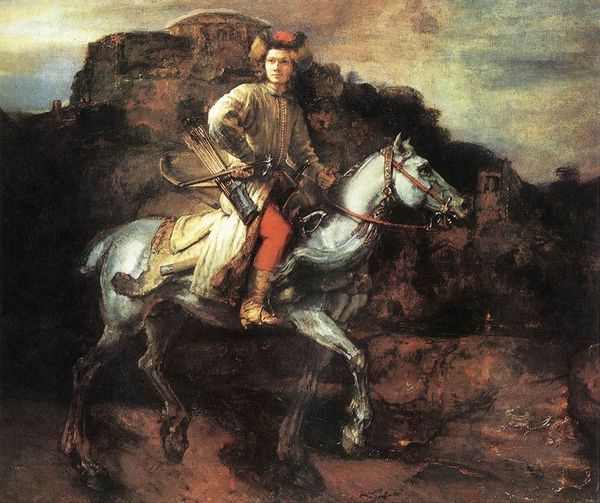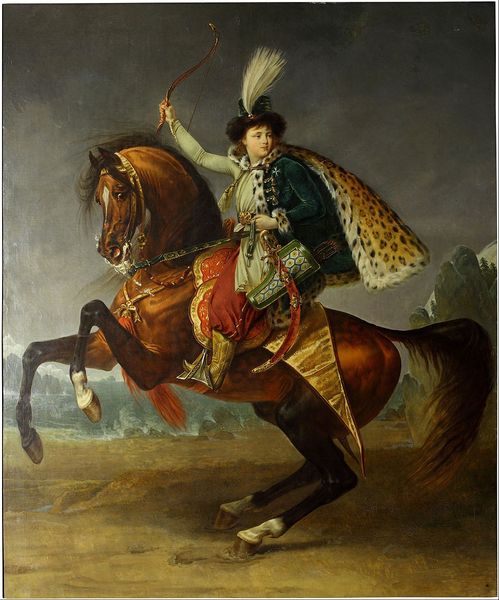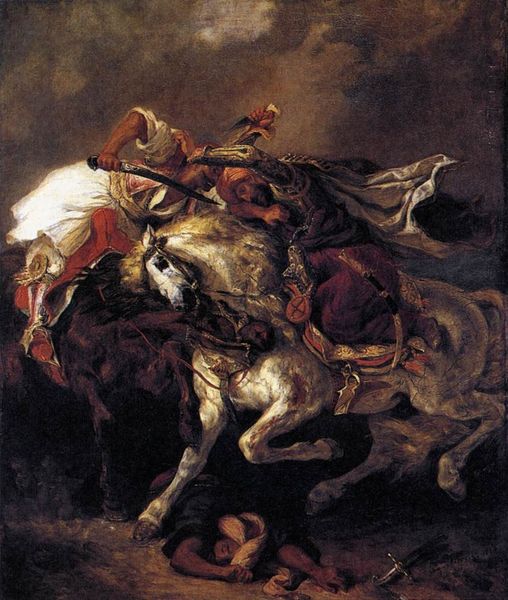
Equestrian Portrait of Don Gaspar de GuzmanCount Duke of Olivares 1634
0:00
0:00
diegovelazquez
Museo del Prado, Madrid, Spain
oil-paint
#
portrait
#
baroque
#
oil-paint
#
landscape
#
oil painting
#
horse
#
history-painting
Dimensions: 239 x 313 cm
Copyright: Public domain
Diego Velázquez painted this equestrian portrait of Don Gaspar de Guzman, the Count-Duke of Olivares, in the 17th century. The Count-Duke, mounted on a rearing horse, brandishes a baton—a symbol of military command and authority. This motif echoes the Roman emperors of antiquity, who were often depicted in similar equestrian poses, conveying power and victory. This baton, reminiscent of a scepter, links Olivares to a lineage of rulers and conquerors across time. Note the theatrical drama of the rearing horse, a visual device used since the Renaissance to signify dominance and control. Yet, such displays also carry an inherent tension, a suggestion of instability and the potential for a fall. Consider how these symbols are adapted and reinterpreted. The baton, once a straightforward emblem of power, becomes tinged with the Count-Duke's own complex ambitions and the shifting political landscape of his time. The baton, the horse, and the Count-Duke himself, stand as vivid reminders of how images and their meanings are continually reshaped by history and human experience.
Comments
No comments
Be the first to comment and join the conversation on the ultimate creative platform.
